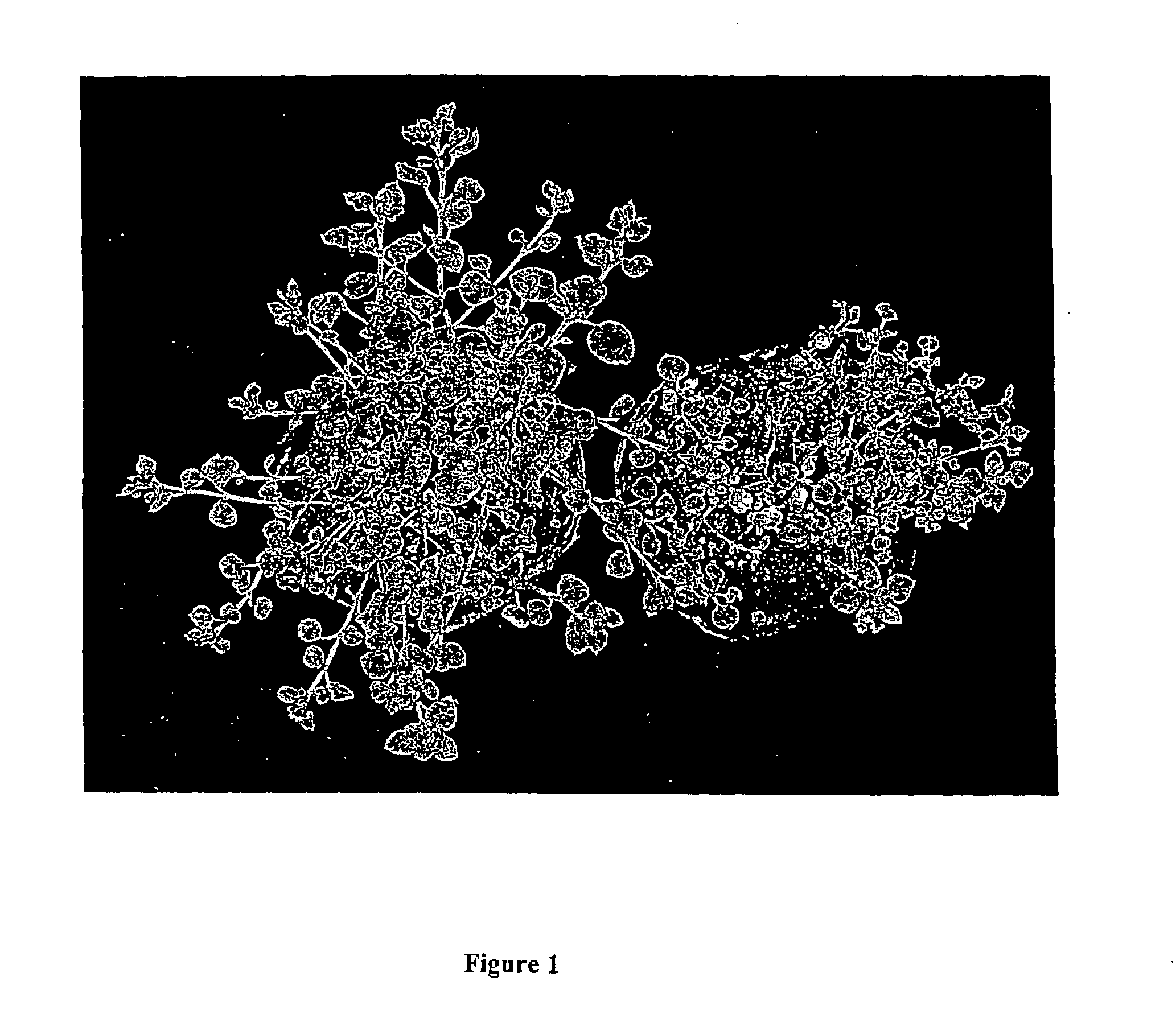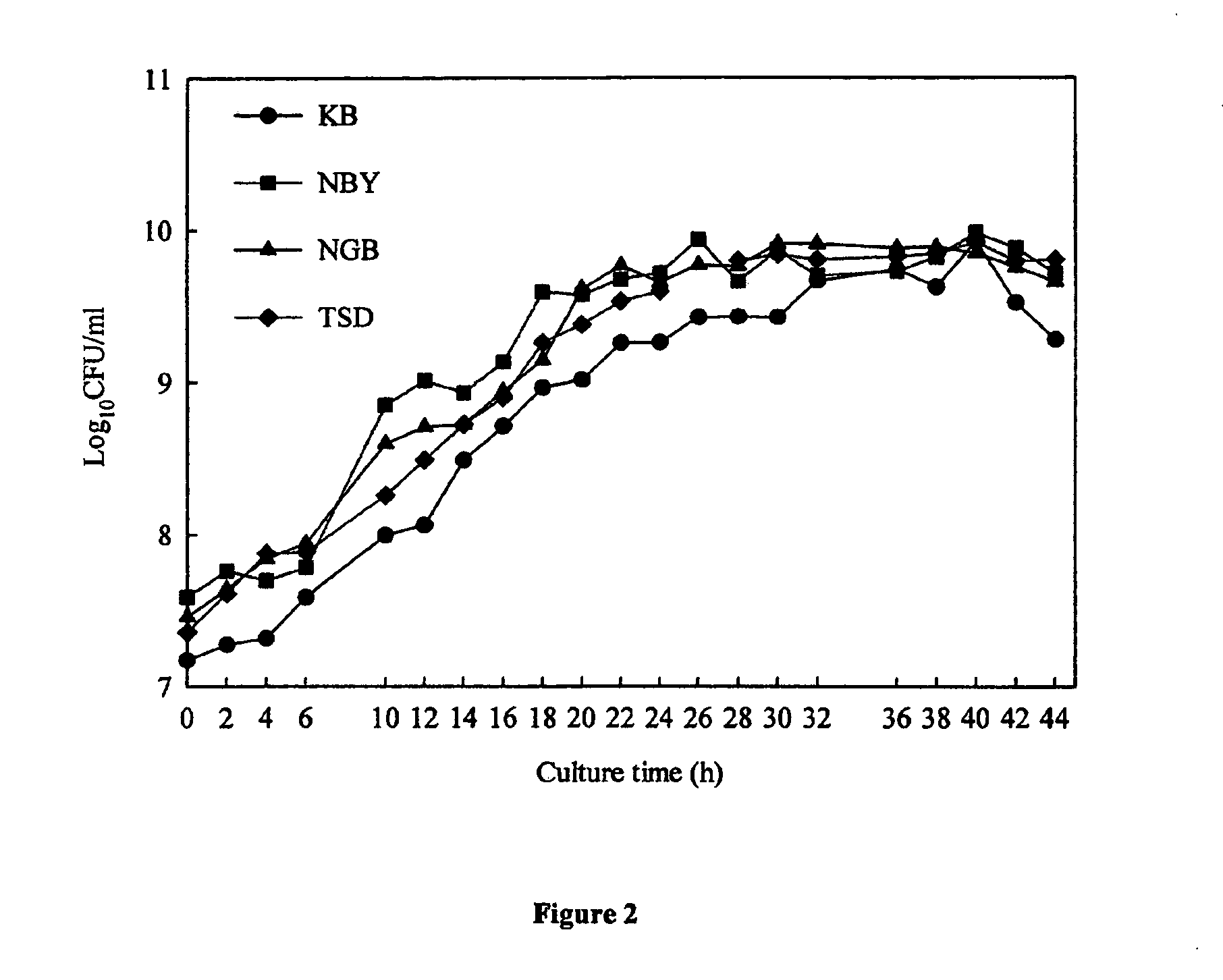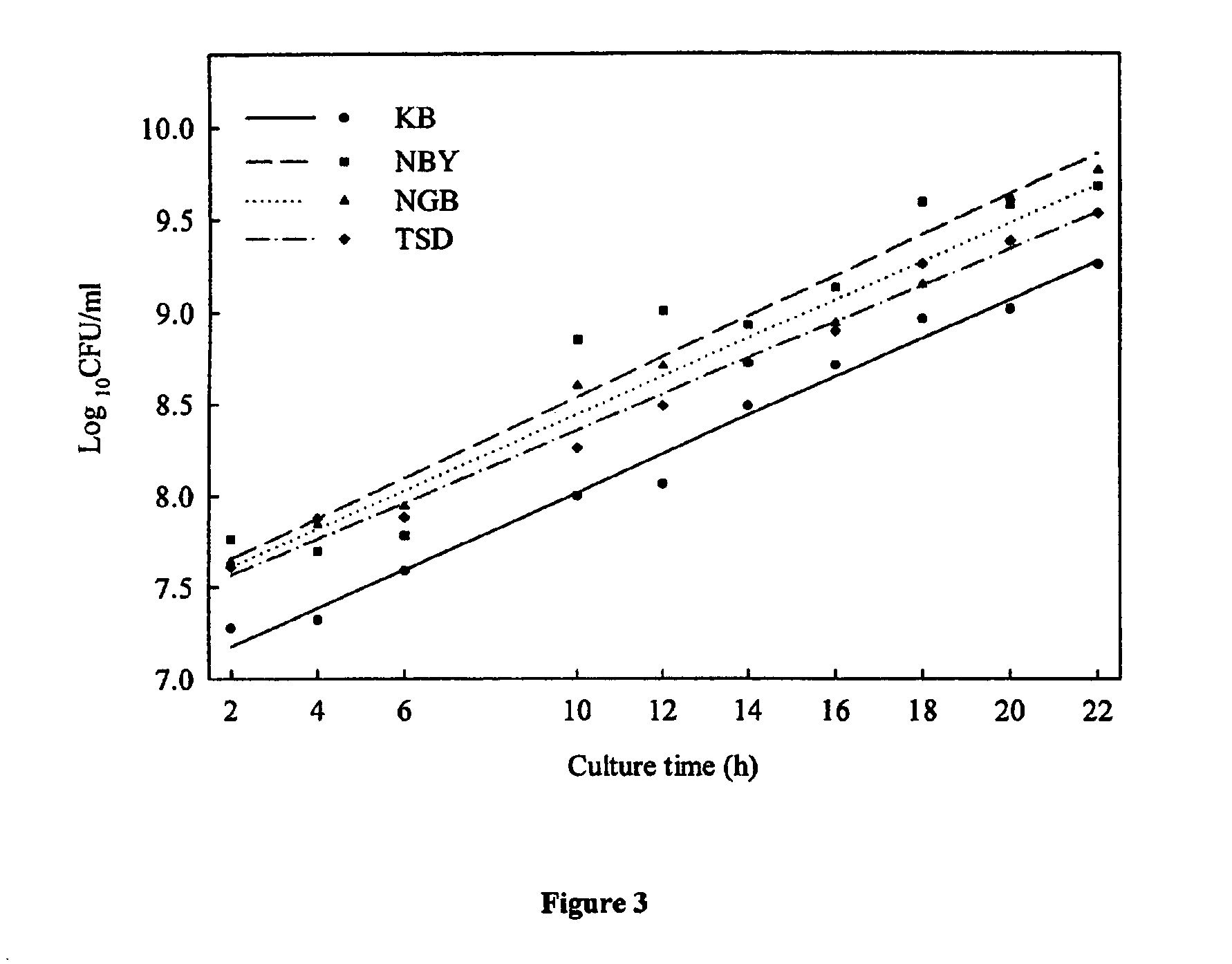Chickweed bioherbicides
a bioherbicide and chickweed technology, applied in the field of bacteria biocontrol agents for suppressing weed growth, can solve the problems of limiting herbicide choices for chickweed control in most crops and other non-agricultural lands, and achieve the effects of reducing the size of droplets, slowing chickweed growth and death, and easy cultur
- Summary
- Abstract
- Description
- Claims
- Application Information
AI Technical Summary
Benefits of technology
Problems solved by technology
Method used
Image
Examples
example 1
[0058]Collection and Screening of Bioherbicide Candidates for Control of Chickweed
[0059]The use of living microorganisms, mainly plant pathogens, for control of weeds has received increasing interest in the last three decades, especially the bioherbicide approach (Charudattan, 2001). The bioherbicide approach. involves three major phases or stages: 1) discovery, 2) development, and 3) deployment (Templeton, 1982). Major activities in the discovery phase involve the collection of diseased plant material, the isolation of causal organisms, and the demonstration of Koch's postulates (Watson, 1993). To date, there has been no research to extensively search for chickweed diseases with an aim to develop a bioherbicide.
[0060]Unlike the classical biological control approach, the bioherbicide approach usually relies on the use of endemic pathogens (Watson, 1993). In Canada, three fungi, Septoria stellariae Ro. & Desm., Melampsorella caryophyllacearum Schroet., and Puccinia arenariae (Schum.)...
example 2
Characterization and Identification of Bacterium CW00B006C
[0080]The native bacterium, strain CW00B006C, caused severe disease on chickweed. In order to further evaluate and develop this bacterium as a bioherbicide, its identification was conducted to provide information on its pathogenicity, culture conditions, and phylogenetic relations. Various techniques are available for bacterial identification including phenotypic and genotypic analyses (Bagsic-Opulencia et al., 2001; Viallard et al., 1998; Whitford et al., 2001). The bacterium was identified using those available technologies including physiological and biochemical characterization, fatty acid composition, and 16s rDNA sequence. In addition, the bacterial growth and disease symptoms were also characterized.
Phenotypic Analyses
[0081]The bacterial isolate CW00B006C was characterized and identified based on phenotypic properties including physiological and biochemical characterization and fatty acid composition.
Physiological and ...
example 3
Chapter 4 Cell Production of Bacterium CW00B006C
[0089]The development of low-cost methods for mass production of a bioherbicide is an important step for the commercialization of a bioherbicide (Stowell et al., 1989; Boyette et al., 1991). Submerged liquid culture spore production is the preferred technique for mass production of biocontrol agents because the technology is readily available and the scale-up process from the research phase to the development phase is relatively easy (Churchill, 1982; Stowell et al., 1989; Jackson, 1997). So far, no information has been reported on submerged liquid culture cell production for Burkholderia andropogonis. In this example, the growth curve of B. andropogonis was characterized in different liquid culture media, the effect of medium pH on cell production of B. andropogonis was determined, and (3) the effect of addition of chickweed extracts on cell production of B. andropogonis was evaluated.
[0090]For all experiments, stock cultures of CW00B...
PUM
| Property | Measurement | Unit |
|---|---|---|
| culture time | aaaaa | aaaaa |
| temperature | aaaaa | aaaaa |
| pH | aaaaa | aaaaa |
Abstract
Description
Claims
Application Information
 Login to View More
Login to View More - R&D
- Intellectual Property
- Life Sciences
- Materials
- Tech Scout
- Unparalleled Data Quality
- Higher Quality Content
- 60% Fewer Hallucinations
Browse by: Latest US Patents, China's latest patents, Technical Efficacy Thesaurus, Application Domain, Technology Topic, Popular Technical Reports.
© 2025 PatSnap. All rights reserved.Legal|Privacy policy|Modern Slavery Act Transparency Statement|Sitemap|About US| Contact US: help@patsnap.com



